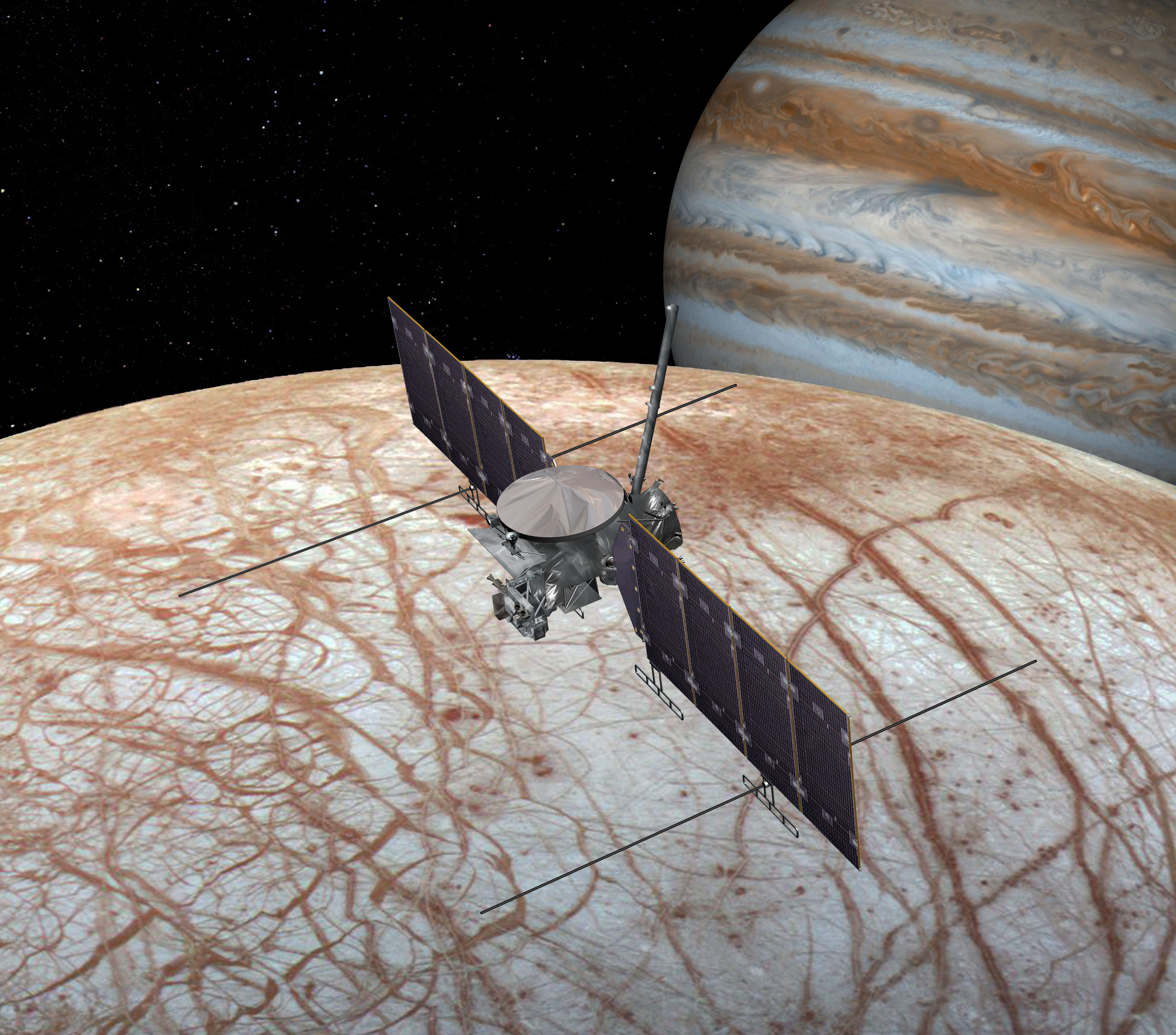Europa clipper
Several spacecraft have, so far, ventured to the neighborhood of this enigmatic satellite of Jupiter. Pioneer 10 was the first to glimpse Europa as it passed by Jupiter, but the craft was too distant to see detail on the moon. This mission was followed the next year by Pioneer 11, which passed 600,000 km (375,000 miles) from the surface of the satellite.
Voyager 1 and 2 made their way past the Jovian system (including Europa) in 1979. Voyager 2 found a pair of dark brown lines on the surface of this moon, suggesting cracks in the icy surface — evidence for a watery body beneath.
The oceans of Europa were confirmed by the Galileo mission, which orbited the mighty planet from 1995 yo 2003.
In the video above, a look at the water world Europa.
The draw to explore Europa further is inciting, and NASA plans to venture there again with the Europa Clipper, due for launch sometime between 2023 and 2025.
“Europa is one of our best chances of finding life in our solar system. NASA’s Europa Clipper mission will launch in the next few years, and so our work aims to prepare for the mission, which will investigate Europa’s habitability,” Deswani continues.
The Europa Clipper will bring nine instruments to bear on the mysterious moon. Cameras will be joined by thermal detectors, magnetometers, and radars designed to peer beneath the ice.
The spacecraft is expected to make more than 40 orbits around Europa, at distances ranging from 25 to 2,700 km (16 to 1,700 miles) above the surface of the world. Flying this close to Europa, the Clipper will experience massive exposure to potentially damaging radiation. The elongated orbit minimizes exposure to the craft.
In addition, the JUpiter Icy Moons Explorer (JUICE), envisioned for flight sometime in the next decade, will search Europa for organic molecules, including those associated with life.
This recent study is currently being discussed at the Goldschmidt Virtual Conference, being held June 21–26, 2020.
This article was originally published on The Cosmic Companion by James Maynard, founder and publisher of The Cosmic Companion. He is a New England native turned desert rat in Tucson, where he lives with his lovely wife, Nicole, and Max the Cat. You can read this original piece here.
Astronomy News with The Cosmic Companion is also available as a weekly podcast, carried on all major podcast providers. Tune in every Tuesday for updates on the latest astronomy news, and interviews with astronomers and other researchers working to uncover the nature of the Universe.
"may" - Google News
June 27, 2020 at 07:16PM
https://ift.tt/3g3XKDn
The oceans of Jupiter's moon Europa may be habitable, according to NASA - The Next Web
"may" - Google News
https://ift.tt/3foH8qu
https://ift.tt/2zNW3tO
Bagikan Berita Ini















0 Response to "The oceans of Jupiter's moon Europa may be habitable, according to NASA - The Next Web"
Post a Comment